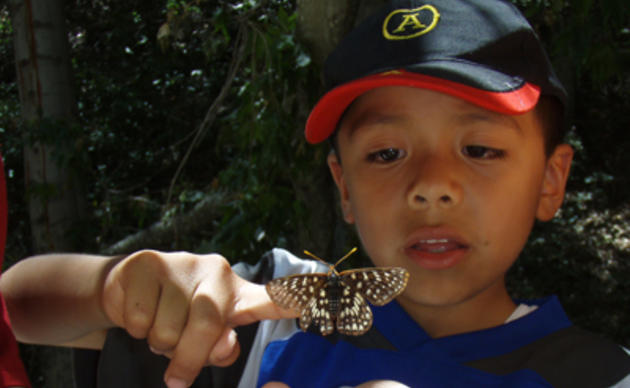
Cedar Waxwing
Bombycilla cedrorum
With thin, lisping cries, flocks of Cedar Waxwings descend on berry-laden trees and hedges, to flutter among the branches as they feast. These birds are sociable at all seasons, and it is rare to see just one waxwing. Occasionally a line of waxwings perched on a branch will pass a berry back and forth, from bill to bill, until one of them swallows it. This species has a more southerly range than the Bohemian Waxwing, and is a familiar visitor to most parts of this continent south of the Arctic.
Habitat
Open woodlands, fruiting trees, orchards; in winter, widespread, including towns. Breeding habitat is influenced by availability of fruiting trees and shrubs, often most common in "edge" situations, as along forest edges, streamsides, overgrown fields, edges of swamps, suburban yards. In winter, may be in any wooded or semi-open area where berries are abundant.
Feeding Behavior
Except when nesting, almost always forages in flocks. May hover briefly while plucking berries or taking insects from foliage. Often flies out to catch insects in mid-air.
Eggs
3-5, rarely 2-6. Pale gray to bluish gray, finely spotted with brown and black. Incubation is probably by female only, averaging about 12-13 days. Young: Both parents feed nestlings. Young leave the nest about 14-18 days after hatching. 2 broods per year.
Young
Both parents feed nestlings. Young leave the nest about 14-18 days after hatching. 2 broods per year.
Diet
Mostly berries and insects. Majority of annual diet is berries and small fruits; feeds on very wide variety of berries, with some important sources including juniper, dogwood, and wild cherries. Also eats some flowers and will drink oozing sap. Eats many insects in summer, including beetles, caterpillars, ants. Young nestlings are fed mostly insects at first, then more berries after a few days.
Nesting
In many areas, nesting is late, not beginning until mid-summer. Only a small area is defended as territory, so birds may nest near others in small colonies. In courtship, two birds may perch close together, posturing, touching bills, and passing food items back and forth. Nest: Placed in tree, on horizontal limb or in fork, usually 6-20' above the ground but can be lower or much higher (up to 50'). Nest (built by both sexes) is a rather loosely built open cup of grass, weeds, twigs, plant fibers, lined with finer materials such as moss, rootlets, fine grass, hair.
Sign-up to receive updates on our events
We send out periodic emails about programs, events, and volunteer opportunities at the Center.




